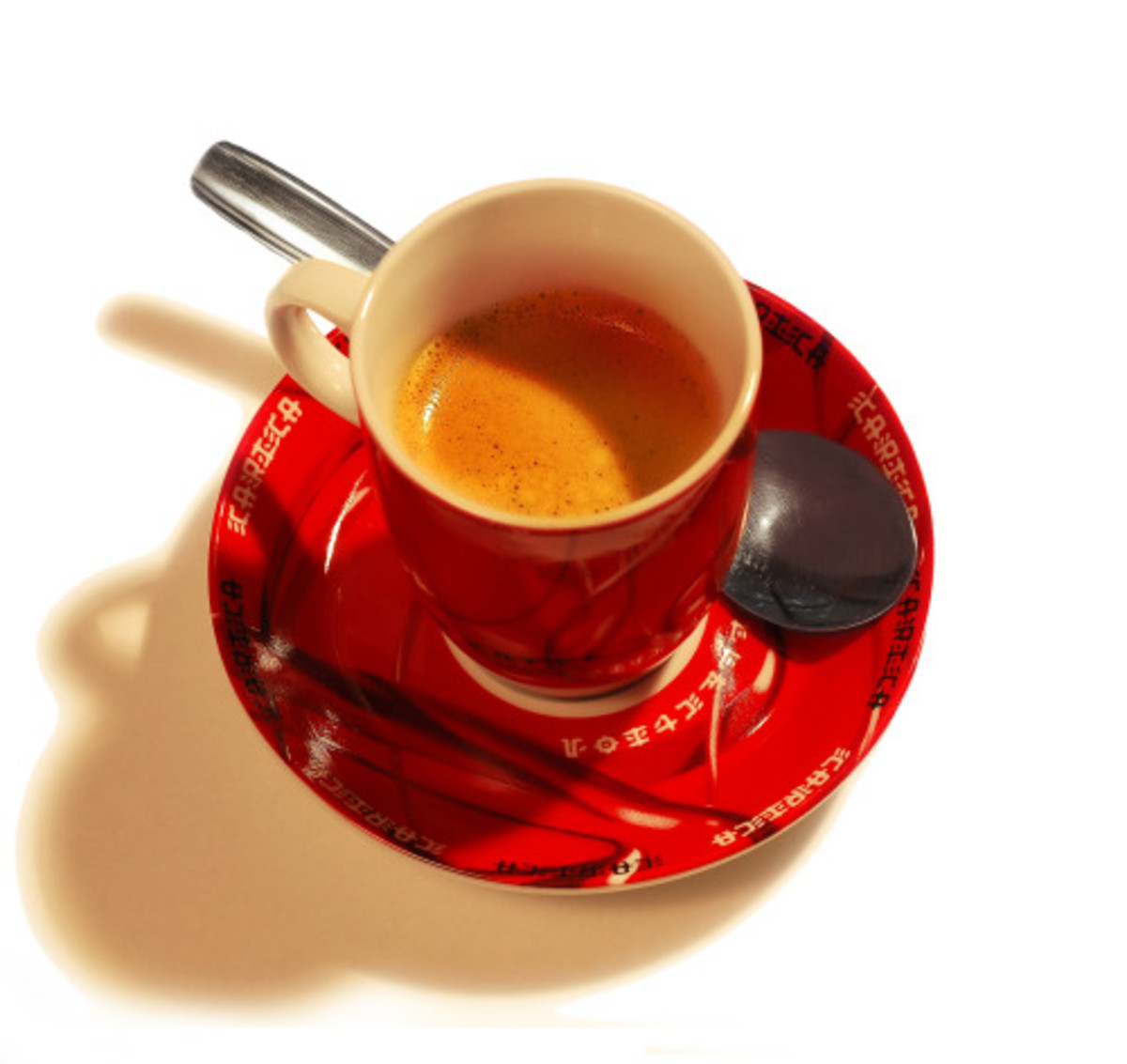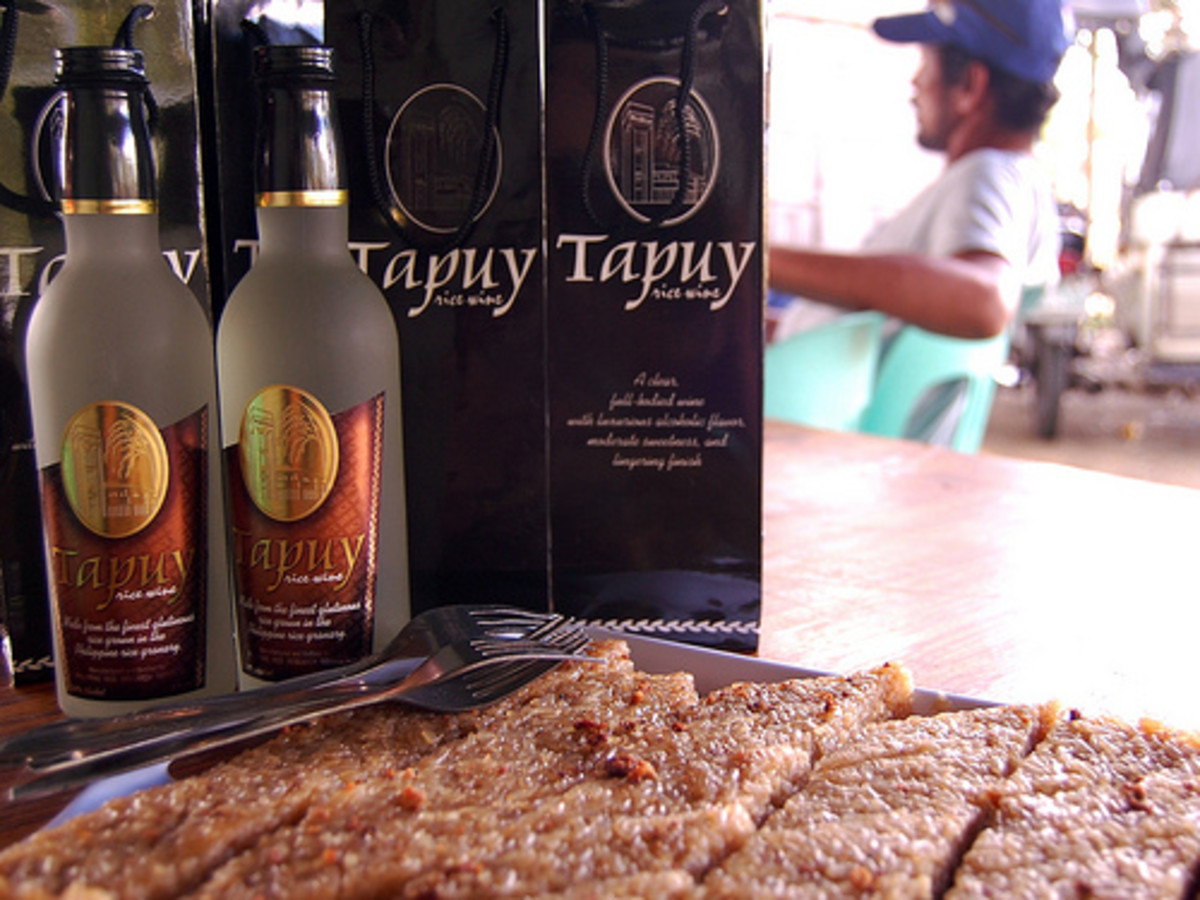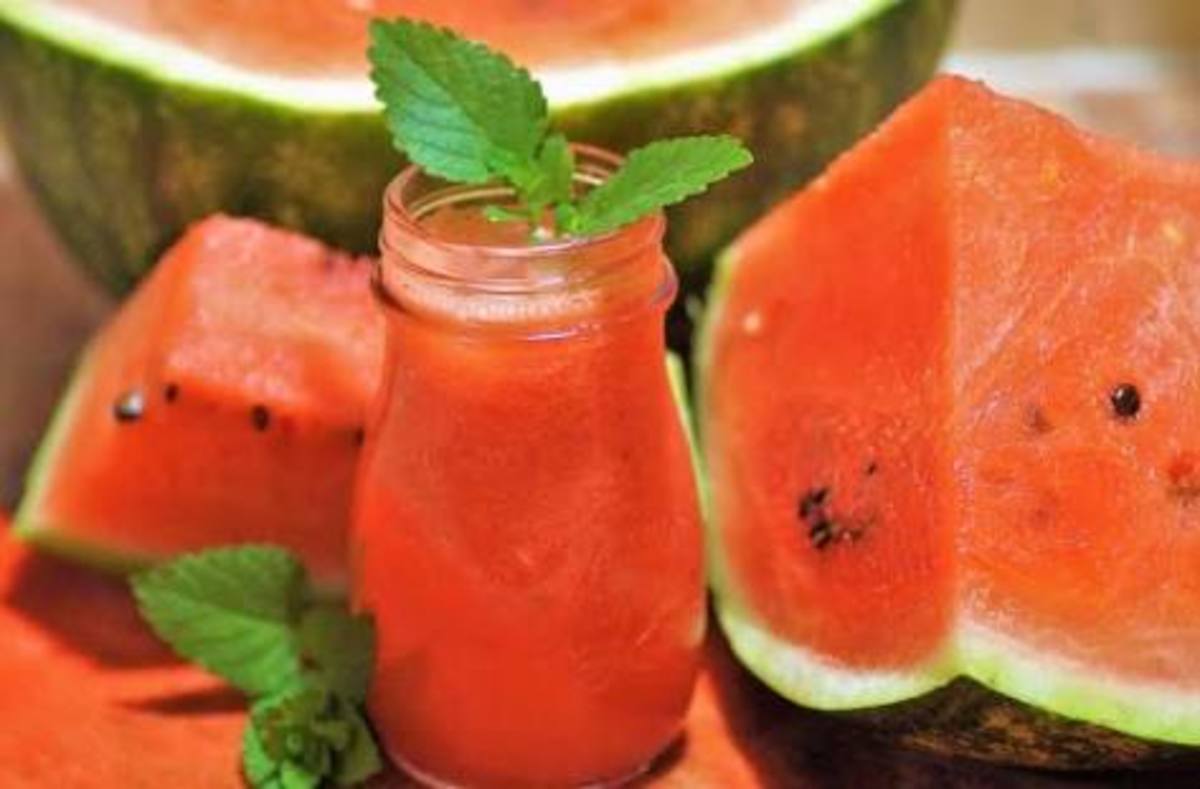Beer 101: What's in it and How you make it: The Four ingredients.
Reinheitsgebot -- What's that mean??
Welcome back to the continuing series on beer appreciation! The goal of this HUB is to break down beer into the four ingredients and examine them a little more closely. The four ingredients were institutionalized long ago by German law. That is correct. The Germans care so much about ensuring the highest purity and quality in their beers that they passed a law back in 1516 that said only the four basic ingredients may be used to brew beer within its borders. That law was named Reinheitsgebot. Those of us who cannot pronounce German with ease simply refer to it as "The German Beer Purity Law." Here is the relevant excerpt from an english translation:
"...Furthermore, we wish to emphasize that in future in all cities, markets and in the country, the only ingredients used for the brewing of beer must be Barley, Hops and Water. Whosoever knowingly disregards or transgresses upon this ordinance, shall be punished by the Court authorities' confiscating such barrels of beer, without fail..."
A full translation can be found here.
The list there states barley, hops, and water as the only ingredients to be used in beer. It does not specifically list yeast because beer is not possible to make without yeast. It is the yeast's consumption of the grains (or barley) that produces the alcohol. More of the brewing process will be described as we discuss the four ingredients and their place in the making of beer.
Barley, or Grains, the body of the beer
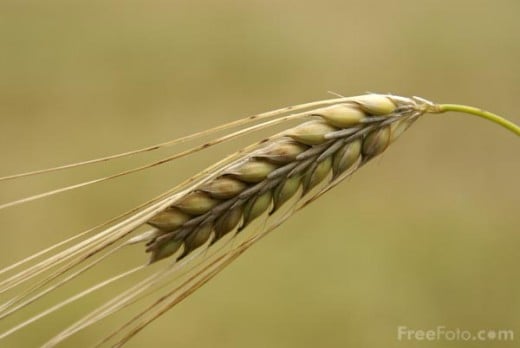
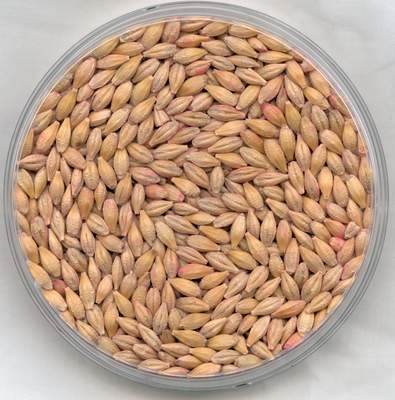
What is barley and why is it in my beer?
First and foremost barley is a grain like rye, wheat, rice, corn, etc. Why barley? It has to do with the process of malting, which will be explained in a moment. While any grain can be malted, long ago it was discovered the easiest and best tasting grain to malt was barley. The malting of barley is the first step in the brewing process. Malting is the controlled process in the production of beer of germinating barley or other grains. Germination is the name for the process when a seed begins to sprout into a seedling. This is done because Barley contains a lot of starch and during the germination process enzymes are produced which will convert that starch into fermentable sugars that will turn to alcohol in the brewing process.
This is achieved by soaking the grains in water (this is the first, but not the last place, where the second ingredient, water, will be used in the brweing process) to raise the moisture content which helps promote germination. The seeds are then allowed to germinate for four or so days after which the still green malt will be heated for a long time to halt germination and dry in a process called kilning. This is the last process in the making of malted barley, or grains, however the grains are not quite ready to become beer.
Next the malted barley must be mashed up thouroughly in water (this is the second time water is used). This is strained and the resulting sweet liquid is called wort. Wort is basically unfermented beer, it is sweeter than beer not only because it has a lot of sugar in it, but there are no bittering agents added yet.
The end product of beer will have its body, flavor, color and head significantly determined by the body, flavor, and color of wort. Much like roasting coffee beans, the longer the barley is roasted, the darker and more full the beer will be.
Water: the source of all life
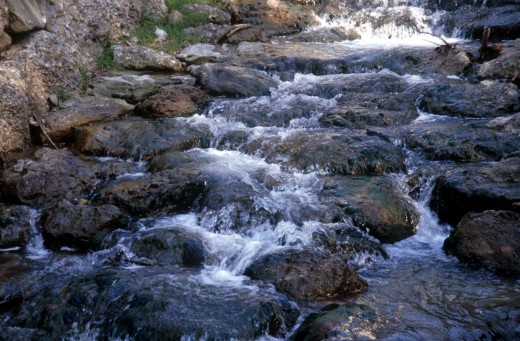
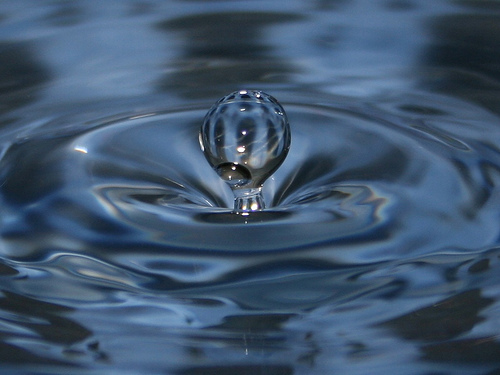
Malted Grain + Water = Wort
Water is used throughout the brewing process, not the least of which is the cleaning and purifying of all instruments and ingredients used in the beer, as well as those mentioned above and below.
However, it is during the production of and fermentation of the wort that the most water is added to the beer. Depending on the brewing process the brewer will either used premade malt, or a mash grain malt the way described above to create the wort. The wort is boiled and for the first time hops can be added to the beer (more on this in a moment). After the wort has been boiled for at least half an hour or so, with careful attention paid by the brewer to ensure it does not scorch, it is cooled and its specific gravity, among other things, are checked to ensure the wort is well on its way to becoming beer. Now it is ready for the yeast.
Yeast: The Magic Ingredient in Beer
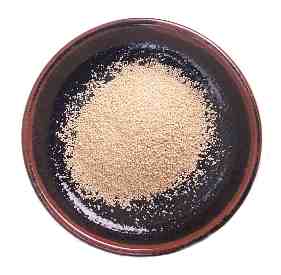
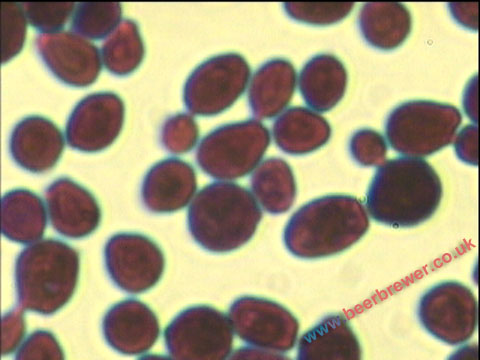
A tale of two yeasts...
Now we've reached the part in the brewing process where the great divide between the two types of beer must be made. What two types of beers are there? Lagers and Ales. The difference between the two styles is simply the type of yeast used. There is a lot of misinformation and confusion about the difference between ales and lagers, but rest assured the only real difference is the type of yeast used. All other differences are intentionally made by brewers after many years of trial and error in an effort to get the best taste and quality out of the two strains of yeast used to make beer.
The first type of yeast, used to make ales, ferments at a higher temperature and the yeast eats its way from the top of the wort to the bottom. This is the older of the two types of beer because thousands of years ago there was no such thing as artificial refrigeration and therefore it was very difficult to find a spot cool enough to experiement with cold-fermenting yeasts long enough to develop a beer that was worth drinking.
In fact the development of the second type of beer, the lager, did not happen at all until 1842 in Pilsen, Czechoslovokia. The very first lager ever produced was the Pilsener Urquell, and every yellow colored, light lager ever since, think Milwaukee and St. Louis breweries, has copied the process first accomplished in Pilsen. Unlike ales, a lager is brewed at cold temperatures, and instead of fermenting from the top down, lagers ferment from the bottom of the wart to the top, exactly inverse of the ale yeast's behaviour. Because lagers are brewed at a lower temperature the process is slowed down and they take much longer to brew than ales which ferment at much higher temperatures.
With either type of yeast, what exactly happens is the sugars produced by germination in the malting process are consumed and the byproducts of the consumption are alcohol and carbon dioxide. Carbon dioxide is an important result too, because without it the beer would not naturally carbonate and all beer would be flat instead of pleasingly fizzy.
After fermentation is complete any last minute quality checks or modifications are made before the beer is aged, or bottled depending on the style. The only thing left to discuss: HOPS!
Hops, Hops and More Hops!
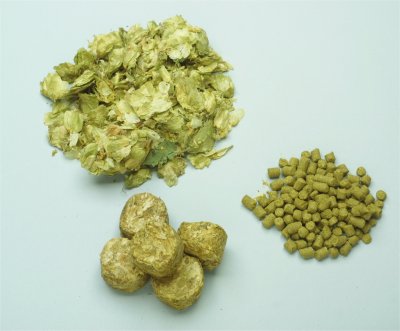
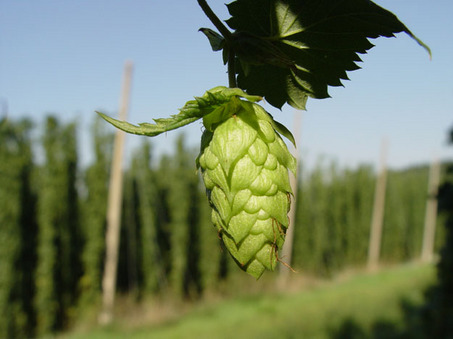
So if all you need is wort and yeast to make alcohol, why are there hops in my beer?
Before we discussed that hops can be added to the wort at any time, the decision on when and how to add the hops affects three major things about the beer: its flavor, its aroma, and its shelf life.
Originally, different types of blossoms or flowers, heather is a good example, were used in the brewing of beer to balance the heavily sweet and weak finishing fermented wort. Sweetness and body are detected by the tongue in the front and middle. This left the back of the tongue painfully untitillated by beer. This led to experimentation in effort to find a good "finish" for beer. Slow experimentation over time proved that hops were the most valuable and flavorful ingredient that could be used to add a bitter agent at the end of a drink to balance the flavors from the first taste on the tip of the tongue to the final taste as it is swallowed at the back of the mouth.
The earlier the hops are added into the boiling stage of the wort, the more bitter they become. Aromatic hops, ones that give beer its floral, or "skunky" smell are added far later when they will be able to retain their citrusy and bright characteristics so noticeable by the nose and sides of the tongue. Most brewers use both early hops, that is hops introduced early on in the wort process, as well as late hops, with different strains specialized for different aspects of the beer's final flavor.
Hops also work as a natural preservative. They help to keep the beer from spoiling and losing its carefully constructed flavors and aromas. Hops proved to be so useful to this that during the 19th century Britain created a new version of the "pale ale" that was so volumously hopped it could survive a sea voyage from Britain to India. Thus the "India Pale Ale" was born as a hoppier version of the traditional pale ale. British soldiers and settlers felt so superior to the conquered peoples they colonized that they refused to drink any beer except beer that had been brewed on their beloved Isle. So rather than build breweries in their colonies to meet the demand, beer evolved, albeit for slightly prejudice reasons. We can all be thankful the end result of such behavior was as inventive and flavorful as it was, for IPAs have become one of the most exciting and bold brews around today. Especially in the American Pacific Northwest where almost every brewery has at least one IPA.
In conclusion, the four major ingredients of beer, though they are not the only ones, provide a great starting place for understanding how intricate and beautiful the art of brewing is. Beer is as old as man, and therefore its story is just as long and complex. Any examination of it must necessarily omit some of its rich history and delicate brewing process in order to be brief enough to be useful.
So what's next for the Beer 101 series? The origins of beer? The legend of the heather brew? Belgium and its special place in the world of beer? You tell me.

